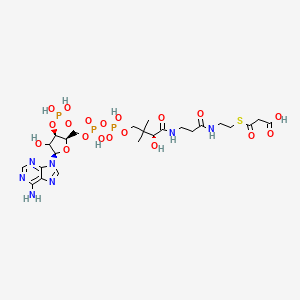| MeSH term | MeSH ID | Detail |
|---|---|---|
| Diabetes Mellitus | D003920 | 90 associated lipids |
| Adenocarcinoma | D000230 | 166 associated lipids |
| Reperfusion Injury | D015427 | 65 associated lipids |
| Diabetes Mellitus, Type 2 | D003924 | 87 associated lipids |
| Fatty Liver | D005234 | 48 associated lipids |
| Ketosis | D007662 | 13 associated lipids |
| Body Weight | D001835 | 333 associated lipids |
| Heart Failure | D006333 | 36 associated lipids |
| Prostatic Neoplasms | D011471 | 126 associated lipids |
| Hypothyroidism | D007037 | 32 associated lipids |
Lmfa07050031
Lmfa07050031 is a lipid of Fatty Acyls (FA) class. The involved functions are known as Pigment and Polymerization. The related lipids are Propionate.
Cross Reference
Introduction
To understand associated biological information of Lmfa07050031, we collected biological information of abnormalities, associated pathways, cellular/molecular locations, biological functions, related genes/proteins, lipids and common seen animal/experimental models with organized paragraphs from literatures.
What diseases are associated with Lmfa07050031?
There are no associated biomedical information in the current reference collection.
Possible diseases from mapped MeSH terms on references
We collected disease MeSH terms mapped to the references associated with Lmfa07050031
PubChem Associated disorders and diseases
What pathways are associated with Lmfa07050031
There are no associated biomedical information in the current reference collection.
PubChem Biomolecular Interactions and Pathways
Link to PubChem Biomolecular Interactions and PathwaysWhat cellular locations are associated with Lmfa07050031?
There are no associated biomedical information in the current reference collection.
What functions are associated with Lmfa07050031?
Related references are published most in these journals:
| Function | Cross reference | Weighted score | Related literatures |
|---|
What lipids are associated with Lmfa07050031?
Related references are published most in these journals:
| Lipid concept | Cross reference | Weighted score | Related literatures |
|---|
What genes are associated with Lmfa07050031?
There are no associated biomedical information in the current reference collection.
What common seen animal models are associated with Lmfa07050031?
There are no associated biomedical information in the current reference collection.
NCBI Entrez Crosslinks
All references with Lmfa07050031
Download all related citations| Authors | Title | Published | Journal | PubMed Link |
|---|---|---|---|---|
| Takagi M et al. | Pantothenate kinase from the thermoacidophilic archaeon Picrophilus torridus. | 2010 | J. Bacteriol. | pmid:19854913 |
| Sucajtys-Szulc E et al. | Differential effect of prolonged food restriction and fasting on hypothalamic malonyl-CoA concentration and expression of orexigenic and anorexigenic neuropeptides genes in rats. | 2010 | Neuropeptides | pmid:20004973 |
| Sharma V et al. | Functional effects of protein kinases and peroxynitrite on cardiac carnitine palmitoyltransferase-1 in isolated mitochondria. | 2010 | Mol. Cell. Biochem. | pmid:19862603 |
| Kharel MK et al. | Enzymatic total synthesis of rabelomycin, an angucycline group antibiotic. | 2010 | Org. Lett. | pmid:20486694 |
| Morash AJ et al. | Genome duplication events have led to a diversification in the CPT I gene family in fish. | 2010 | Am. J. Physiol. Regul. Integr. Comp. Physiol. | pmid:20519364 |
| Onorato JM et al. | Liquid-liquid extraction coupled with LC/MS/MS for monitoring of malonyl-CoA in rat brain tissue. | 2010 | Anal Bioanal Chem | pmid:20549491 |
| Thyfault JP et al. | Metabolic profiling of muscle contraction in lean compared with obese rodents. | 2010 | Am. J. Physiol. Regul. Integr. Comp. Physiol. | pmid:20504904 |
| Hamed RB et al. | Carboxymethylproline synthase catalysed syntheses of functionalised N-heterocycles. | 2010 | Chem. Commun. (Camb.) | pmid:20162132 |
| Liu T et al. | Quantitative analysis and engineering of fatty acid biosynthesis in E. coli. | 2010 | Metab. Eng. | pmid:20184964 |
| Guzmán-Ruiz R et al. | Sensitivity of cardiac carnitine palmitoyltransferase to malonyl-CoA is regulated by leptin: similarities with a model of endogenous hyperleptinemia. | 2010 | Endocrinology | pmid:20056820 |
